Stonehenge Aoteroa is New Zealand's unique open air astronomical observatory, built following ancient knowledge of the stone circles and adapted to the conditions of New Zealand. We look forward to seeing you here during our regular opening hours and for special events.
You can visit the henge anytime we are open, without having to make any appointment. Check out our opening hours below. A map of the Stonehenge Aotearoa structure and a short audio-visual explaining how the stones work are included in the visit.
Open: for self-guided tours, Wweekends and public holidays. Private tours at any time by arrangement.
Or you can book directly through the booking system.
Opening Hours
Daytime: 10am to 4pm
Evening: by appointment
February - May: Wednesday to Sunday
June - August: Weekends & Public Holidays
September to December: Wednesday to Sunday
January: every day to the 30th
We are closed December 21st, 24th, 25th, 26th, then open every day from December 27th.
Phone 06 377 1600.

Wairarapa receives Dark Sky Reserve Status
"Thanks to half a decade of advocacy by a small group of local volunteers, seeking answers in the stars will be preserved in Wairarapa for generations to come, now that the International Dark-Sky Association [IDA] has finally granted the region Dark Sky Reserve status." - (Times Age)

As featured on UNESCO's Astronomy and World Heritage Initiative website
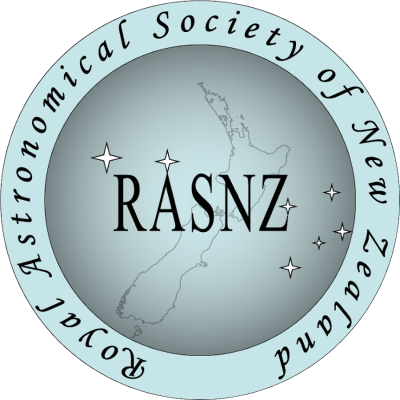
RASNZ newsletter with the official report on the Wairarapa Dark Sky Reserve
Wairarapa Becomes Official Dark Sky Reserve
Why It’s Time for a Worldwide Lights-Out Program
Video courtesy of Phil Stebbing
Learn about the cycles of nature, movements of celestial bodies and archeoastronomy: how our ancestors have understood the phenomena in the sky, how they used these phenomena and what role the sky played in their cultures.
Listen to, or watch, the Arrow FM broadcasts on our Arrow FM Night Sky page
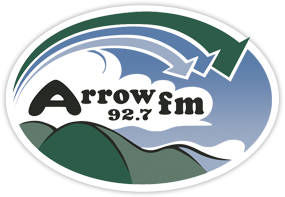
You will learn about the henge and its link with the past, with ancient civilisations and Māori starlore, Polynesian navigation and archeoastronomy.
BOOK A PRIVATE GUIDED TOUR
You are able to visit the henge at any time by arrangement. See our opening hours below. You can book a private tour with Richard Hall any time, daytime or sunset. Must be arranged in advance.

Explore our magnificent night sky. The program begins with a short presentation on our place in the universe. This is followed by an audio-visual that takes you on a tour of our current night sky identifying the planets and notable celestial objects. Weather permitting; we then take you on a laser tour of the heavens beneath the stars at Stonehenge Aotearoa.
Star Treks are available on any evening but must be booked in advance. Allow 90 minutes for your tour which should begin about an hour after sunset.
Minimum price for 2 people is $160 or $80 each. Prices per person reduced as the numbers rise. 3-6 people are $55 each and so on. Email: nzstarlore@gmail.com
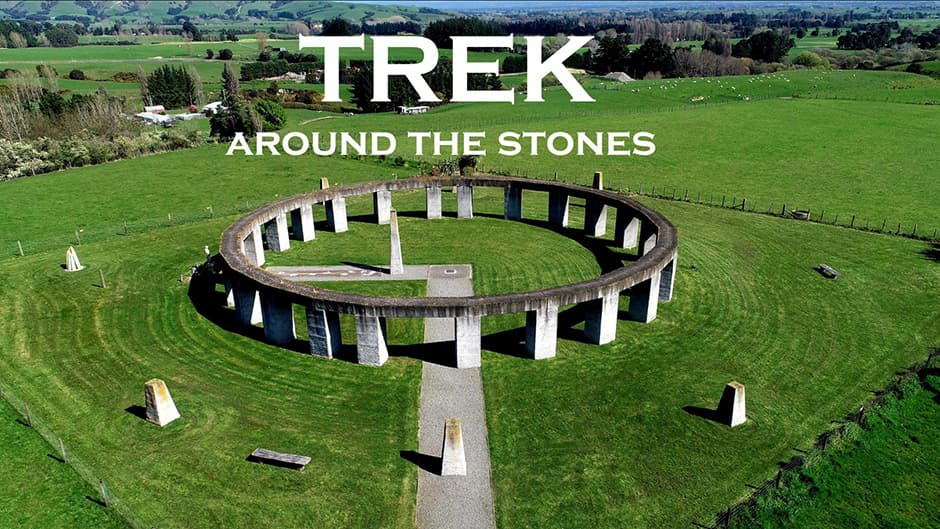
A self-guided tour of Stonehenge Aotearoa. The visitor is provided with a map of the Henge and views a 15 minute audio-visual that explains how the Henge works. Then, with map in hand, you explore the stone circle.
Allow 40 minutes for your Trek which is available during open hours. A trek does not have to be pre-booked.
$15 adults, $10 seniors, $5 for primary or secondary students.
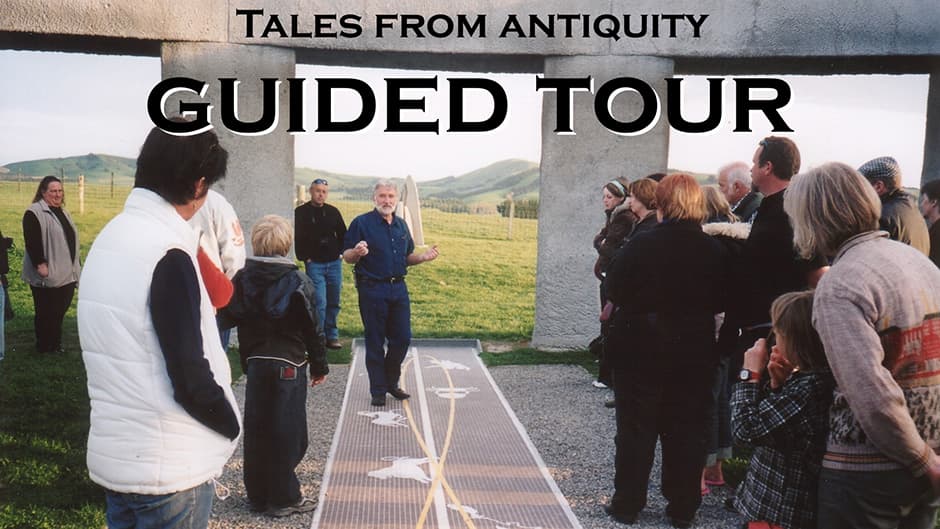
Private and Group story-telling guided tour of Stonehenge Aotearoa. The program begins with a presentation on ancient stone circles and how our ancestors used the sun, moon and stars for religion, navigation and time keeping – when to sail, when to plant, etc. This is followed by an audio-visual that explains how the Henge works. We then explore the Henge accompanied by stories of the solstices, equinoxes and the zodiac.
Guided tours, which are available any time or day, must be booked in advance. Allow 90 minutes for your guided tour. Price per person is reduced as the numbers rise. Minimum for 2 people is $130 or $75 each. 3-6 people are $48 each and so on. Bookings are required. Email: nzstarlore@gmail.com
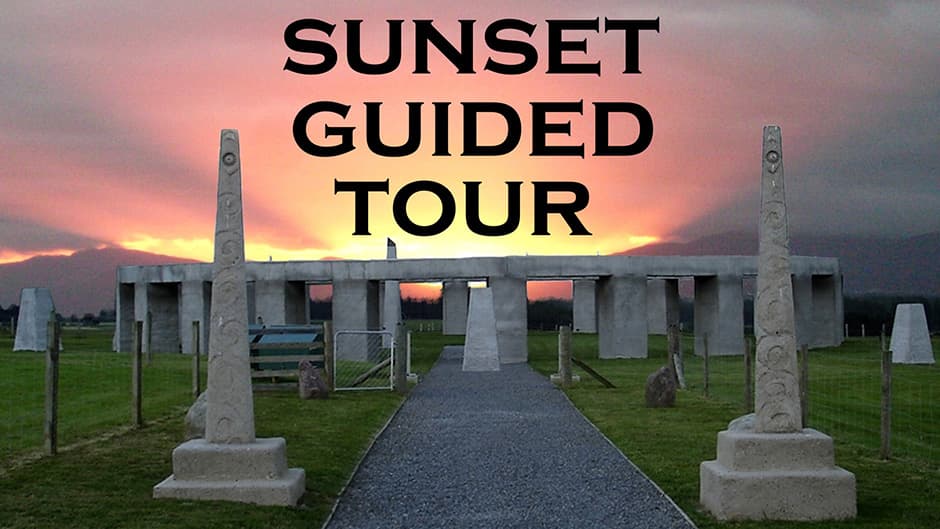
A ‘Guided Tour’ of Stonehenge Aotearoa that includes, weather permitting, viewing the sun set at the Henge.
Sunset Tours are available on any day but must be booked in advance. Allow 90 minutes for your tour which should begin an hour before sunset. Prices as the same as Guided Tour. Email: nzstarlore@gmail.com
Check out the upcoming events, tours, exhibitions, courses and much more at Stonehenge Aotearoa.
Occurs on March 20, 2024 at 6:30pm

The evening at Stonehenge Aotearoa. It begins with Tales of the Autumn Equinox from our Storyteller. This is followed by a procession into the Circle of Stones Weather permitting we will see the Sun set on the Equinox Heel Stone in the west. There may be some music and stargazing as well.
Adults $30, Seniors $25, Child (primary) $5, School student (secondary) $10
Occurs on March 14, 2024 at 7:00pm

In his show 'Celtic Guitar Journey' he presents beautiful guitar arrangements of Irish and Scottish traditional music, exploring the musical connections between these 'Celtic' countries. There's also some new Irish-style tunes composed in New Zealand which represent new kind of traditional Irish-Kiwi music.
The concert also highlights connections between Irish traditional music and other countries, showing how certain types of Irish tune styles were imported from England, Scotland, Poland and Germany. A magical concert of guitar music new and ancient!
Adults (includes seniors) $25, child (primary) $5, School student (secondary) $8
This event is kindly supported by Culture Ireland
Occurs on June 22, 2024 at 4:00pm

The Winter Solstice was, and still is one of the most important festivals of the year. The programme will begin with an introduction, and then we move to the henge to watch the Sun set over the winter heel stone (weather permitting), then we will guide you round the night sky.
Adults $30, Seniors $25, Child (primary) $5, School student (secondary) $10
Occurs on June 28, 2024 at 4:00pm

For more than 6,000 years, throughout Europe and Asia, the dawn rising of the Pleiades star cluster (Matariki, the Seven Sisters) was a significant and celebrated of event.In this presentation we explore their meaning over time and through cultures and their physical nature.
Adults $30, Seniors $25, Child (primary) $5, School student (secondary) $10
Occurs on September 22, 2024 at 5:00pm

Come celebrate the Spring Equinox with us! Enjoy the sunset from within the henge (if possible), learn about how your ancestor viewed the equinox then enjoy exploring the night sky.
Adults $30, Seniors $25, Child (primary) $5, School student (secondary) $10
Occurs on November 2, 2024 at 7:00pm

The sacred time is the early morning rising of Matariki (the Pleiades) but the same stars are visible in the evening sky in November. It is warm, the sky is getting darker. This is the time of learning and understanding.
Adults $30, Seniors $25, Child (primary) $5, School student (secondary) $10
Occurs on December 21, 2024 at 7:30pm

What was the Star of Bethlehem? Ever wondered what it really was? This programme answers that. We go down to the henge to watch the sun set. After that we return to watch the Summer Stars AV. As the sky darkens we listen to music. When the sky is dark we can look at the stars.
Adults $30, Seniors $25, Child (primary) $5, School student (secondary) $10
| Time | |||
|---|---|---|---|
| AUTUMN EQUINOX | Wednesday March 20 | 6:30pm | |
| DAVE FLYNN CONCERT | Thursday March 14 | ||
| Daylight Saving Ends | Sunday April 7 | ||
| WINTER SOLSTICE | 4pm Saturday June 22nd | (Actual date of Solstice Friday 21) | |
| MATARIKI | 4pm Friday June 28 | ||
| Daylight Saving Begins | Sunday September 29 | ||
| SPRING EQUINOX | Sunday September 22 | (Actual date of Equinox Monday 23) | 5pm |
| LEGENDS OF MATARIKI | Saturday November 2 | 7pm | |
| STAR OF BETHLEHEM | Saturday December 21 | (Also date of Summer Solstice) | 7:30pm |


Visitors to Stonehenge can also explore our ‘Exhibition of the Planets'. Here is the story and the latest images of the Sun, Moon, Earth and the other planets (including Pluto).
This Solar System display was designed and built by Richard Hall.
VISIT US
We hold key events each year: the equinoxes and solstices, marking each of the four seasons and Matariki – tales and knowledge (May) and Matariki, finding the waka and the house” in the evening sky (Nov).
VIEW ALL
Guided tours of Stonehenge by Richard Hall. Booking tours is essential, which can be done below:
BOOK ONLINEStonehenge Aotearoa is available for private functions – birthdays, and special occasions by arrangement.






We also offer our venue for weddings too! Here's a testimonial from a recent event:
"A Shoutout to Kay and Richard of Stonehenge Aotearoa. We've just celebrated our daughter's wedding. We started hunting for a venue in June, 2021 for an Easter wedding in April, 2022. We visited quite a few venues. We settled on Stonehenge, Aotearoa for several reasons, our daughter's partner doing his Masters in Astronomy being the absolute clincher.
It was the perfect venue. It was truly a lucky find. Not only was it unique and beautiful, the owners, Kay and Richard, went out of their way to be helpful and accommodating. Comparing prices, I would say their rates were very reasonable.
And we couldn't have managed without the help of our Events Manager, MJ (0274580035). She organized a superb grazing table for us and took on board all the little pre-wedding tasks we entrusted her with. In a nutshell, I think MJ is efficient, flexible and her prices are reasonable. Both Stonehenge and MJ have earned a ton of gratitude from us all. Others who helped: Our regular handyman (Thank you, Jason) and Festival Hire (www.festivalhire.co.nz Highly recommended!)"
Khoty Mathur (mother of the Bride)






Guide only to basic charges (charges may vary with individual requirements):
Send us a message if you would like more information or wish to make a booking:
nzstarlore@gmail.com
Latest news and updates from Stonehenge Aotearoa:
Thanks to Jack for these wonderful photos from the recent Stars and Stones event:



